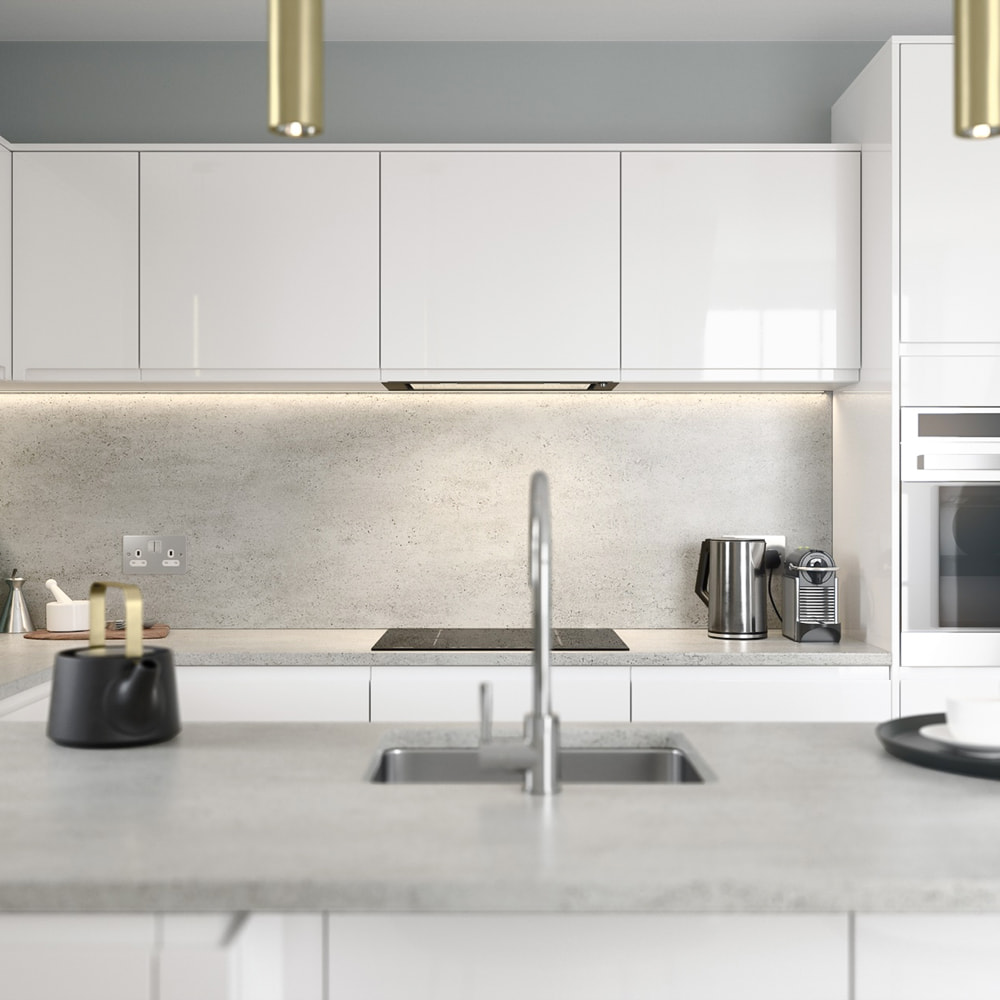PETG Laminated Sheet is a composite sheet made of polyethylene terephthalate (PETG) material. The PETG film is laminated on the surface of the substrate to give the sheet unique performance advantages. Due to its durability, transparency and environmental protection characteristics, PETG laminated sheet has been widely used in many fields such as architectural decoration, advertising display, furniture manufacturing and medical equipment.
PETG laminated sheet has high transparency and good optical properties, and the light transmittance can reach more than 90%. Compared with traditional acrylic or glass materials, it has higher impact resistance and toughness while maintaining excellent optical effects.
PETG material has excellent chemical resistance and can resist the erosion of various chemicals, so that it can still maintain stable performance in corrosive environments. At the same time, its impact resistance is several times that of glass, and it can withstand greater external forces without being easy to break, which makes PETG laminated sheet particularly suitable for industrial applications.

PETG laminated sheet has a low heat deformation temperature, which is convenient for secondary processing such as thermoforming, cutting, bending and engraving. Its good plasticity allows it to meet a variety of shapes and design requirements and is suitable for complex processing techniques.
As an environmentally friendly material, PETG laminated board does not produce harmful substances during processing and use, and meets environmental standards. In addition, PETG materials can be recycled and reused, which helps reduce the impact on the environment.
The substrate of PETG laminated board is usually different materials such as polycarbonate board, PVC board or wood. The surface of the substrate needs to be cleaned and treated to enhance the adhesion of the PETG film.
The PETG film is laminated to the surface of the substrate by hot pressing or cold pressing. During the hot pressing process, the temperature and pressure are controlled to ensure a firm bond between the film and the substrate, and to prevent blistering and peeling.
In order to improve the wear resistance and UV resistance of the board, the surface of the PETG laminated board can be coated, such as adding a scratch-resistant coating or a UV coating, so that it has better durability in outdoor applications.
In architectural decoration, PETG laminated boards are often used for indoor wall decoration, ceilings and partition boards. Its transparency and impact resistance make it an ideal choice for high-end decorative materials. It can also be customized in various colors and textures to meet diverse design needs.
PETG laminated boards are widely used in advertising light boxes, display stands and signboards. Its high transparency makes images and text clearer, and its weather resistance ensures the durability of advertising displays, making it suitable for indoor and outdoor advertising.
In the furniture industry, PETG laminated boards can be used as countertops, cabinet door panels and decorative panels. Its wear resistance and impact resistance improve the durability of furniture and bring more visual beauty to furniture design.
Because PETG materials are non-toxic and meet medical and health standards, PETG laminated boards can be used in the manufacture of protective covers and shells for medical equipment. In addition, its good impact resistance and chemical resistance make it widely used in electronic equipment shells, such as mobile phone cases, tablet computer protective screens, etc.
With technological advances, future PETG laminated boards will add more functional coatings, such as antibacterial coatings, self-cleaning coatings and anti-fog coatings. These coatings can not only improve the performance of the board, but also meet the application needs of special environments, such as the medical field and food packaging field.
In the future, PETG laminated boards will be more combined with new substrates to achieve a balance between lightness and high strength. This can not only reduce material costs, but also enhance product competitiveness and meet diverse market demands.
Environmental issues are receiving increasing attention, and future PETG laminated boards will pay more attention to the degradability and recycling rate of materials. Non-toxic and environmentally friendly materials will become the mainstream direction of industry development to reduce the impact on the environment.


 English
English 中文简体
中文简体









